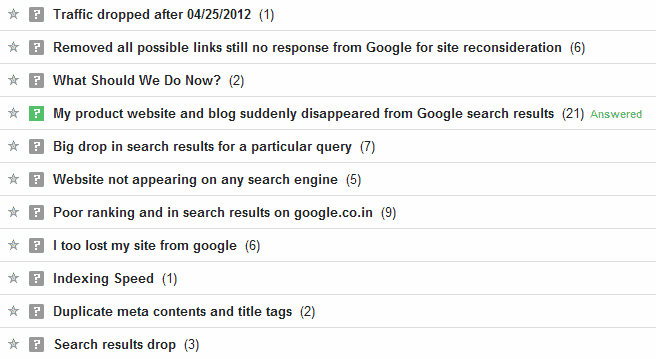Most SEOs are today breathing a sigh of relief. The long-awaited over-optimization algorithm update is now live, and if our client’s sites are anything go to by, there’s little to worry about.
The reason that our clients are more or less unaffected, aside from generally seeing a gain in organic traffic is simple.
We only employ what are considered to be White Hat SEO techniques. In other words when we optimise a website, our goal is to help Google recognise the content of the pages, without in any way affecting the usability of the website.
But not everyone is so happy today.
The Google Webmaster Help forum, for example, is full of complaints:
This post is not in any way gloating. Many of those affected negatively are now in trouble, and this has the potential to have an enormous knock-on effect on their businesses.
But there is an important lesson to be learnt here.
Google have gone to great lengths to explain what they consider to be acceptable SEO, for instance in their Quality Guidelines.
I know of many people and companies who blatantly ignore this advice.
Many feel, for example, that the risks of Black-Hat SEO are outweighed by the benefits.
Yet the risks continue to get increasingly higher.
This is not a one-time effort by Google to improve the quality of their results.
Today might be a good time to reassess the risks of Black-Hat SEO, and perhaps consider the very tangible benefits of playing by the rules.
Unique ideas for your business
The Demystifier puts practical ideas into your hands. You won't find them elsewhere. Original, actionable and insanely effective.



